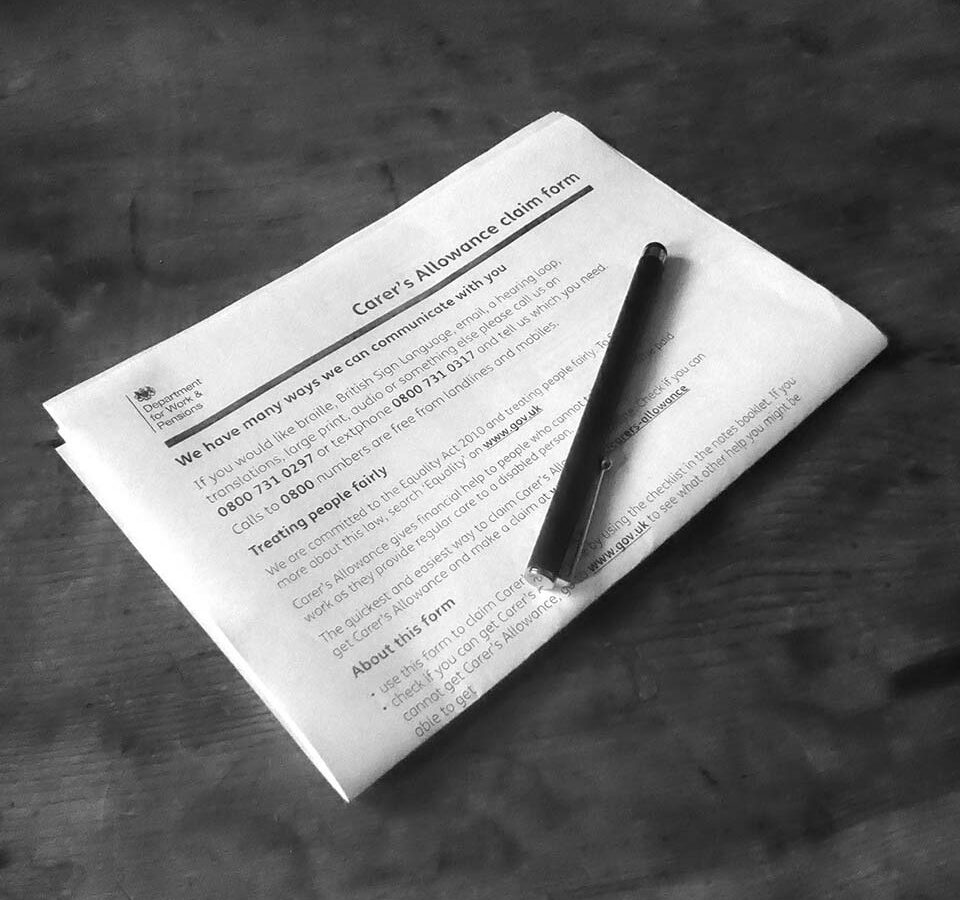There are as many as 10.6 million unpaid carers in the UK, according to Carers UK. It is therefore vital that they claim any welfare benefits to which they are entitled.
Inexplicably, the welfare benefits system seems ungenerous to carers. Carer’s allowance pays below the basic rate of other benefits such as jobseeker’s allowance.
For carers in paid employment, there are restrictions on their entitlement to carer’s allowance, which means many are unable to claim any financial support.
And, while people with disabilities are getting an extra cost-of-living payment, carers are not recognised as being in need of extra help.
Carer’s allowance is the only benefit awarded exclusively for caring responsibilities. It is worth £76.75 per week from April this year.
Although the qualifying rules are the same across the UK, claimants in Scotland receive a bi-annual supplement of £245.70,
To qualify for carer’s allowance, a carer must:
- Be aged 16 or over
- Spend 35 hours or more a week caring for a person who is entitled to the personal independence payment daily living component, or attendance allowance, or disability living allowance (receiving the middle or highest rate care component)
- Not be in full-time education (21 hours a week or more)
- If in paid employment, earn no more than £132 per week (after income tax, national insurance, taxable expenses and half of any contribution towards a personal or occupational pension).
Carer’s allowance is not means tested. Therefore, any income from sources other than the claimant’s or their partner’s earnings and capital do not affect entitlement.
It is taxable. So, if a claimant gets carer’s allowance and other sources of taxable income that takes them above the tax-free personal allowance threshold, they will have to pay some income tax.
It counts as income for means-tested benefits but brings exemption from the benefit cap.
Carer’s allowance counts as income for means-tested benefits. However, it brings exemption from the benefit cap.
Receiving this benefit means the carer is automatically credited with class one national insurance contributions.
Claiming carer’s allowance can entitle a person to other benefits or increase the amount paid.
Within legacy means-tested benefits – those before universal credit (UC), such as income-related employment and support allowance – a carer can get the carer premium. Also, a carer addition is available within pension credit. These are included if the claimant or their partner gets carer’s allowance or has an underlying entitlement to it.
The overlapping benefit rule means a person cannot normally get two income-replacement benefits paid simultaneously, such as the state pension and carer’s allowance if they qualify for both. However, they retain an underlying entitlement to carer’s allowance, so may still get a carer premium.
An important warning is that a carer’s claim for carer’s allowance could lead to the person they look after losing some benefit.
This is because someone entitled to a severe disability premium in their legacy means-tested benefits cannot get it if a person gets carer’s allowance for looking after them. However, if the carer has only underlying entitlement to the benefit so it is not paid, this will not affect the disabled person’s entitlement to this premium.
Within UC, there is a carer’s element; the claimant (or one partner in a joint claim) needs to be entitled to carer’s allowance.
If a carer who is claiming UC has a disability, they may qualify for either the limited capability for work (LCW) element of UC or the limited capability for work-related activity (LCWRA) element.
However they cannot get the carer element at the same time; if they are entitled to one of these higher-paying elements, they will get that instead.
In a couple’s UC claim, it is possible for one partner to meet the conditions for the carer element while the other partner may meet the criteria for the LCW/LCWRA element.





